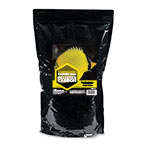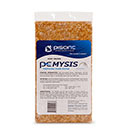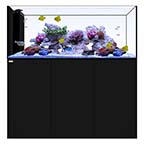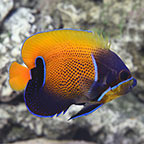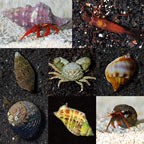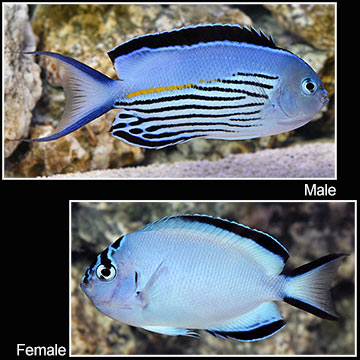
Additional locales and sizes may be available!
Additional locales and sizes may be available! Email me when availableQuick Stats
What do these Quick Stats mean? Click here for more information
What do these Quick Stats mean? Click here for more information
Overview
Watanabe's Angelfish are best housed as a male-female pair in a 125-gallon or larger tank, and are ideal candidates for the deep-water reef aquarium. Acclimation will be facilitated by a dimly-lit tank. The tank should have multiple hiding places and live rock for grazing. Do not keep two males in the same tank as fighting will ensue.
The Watanabe's Angelfish are hermaphroditic and difficult to breed. Watanabe's Angelfish seem very susceptible to swim bladder damage. A varied diet of meaty foods such as vitamin-enriched brine shrimp and finely-chopped crustacean flesh, spirulina, marine algae, high-quality angelfish preparations, mysis or frozen shrimp, and other meaty items will provide good nutrition.
Approximate Purchase size: Small: 1" to 2"; Small/Medium: 2" to 3"; Medium: 3" to 4"; Medium/Large: 4" to 5"; Large: 5" to 6 "






